We crossed into the Netherlands overnight and awoke in Arnhem, just a few hundred meters from the John Frost Bridge, the rebuilt “Bridge Too Far” from Operation Market Garden in World War II.
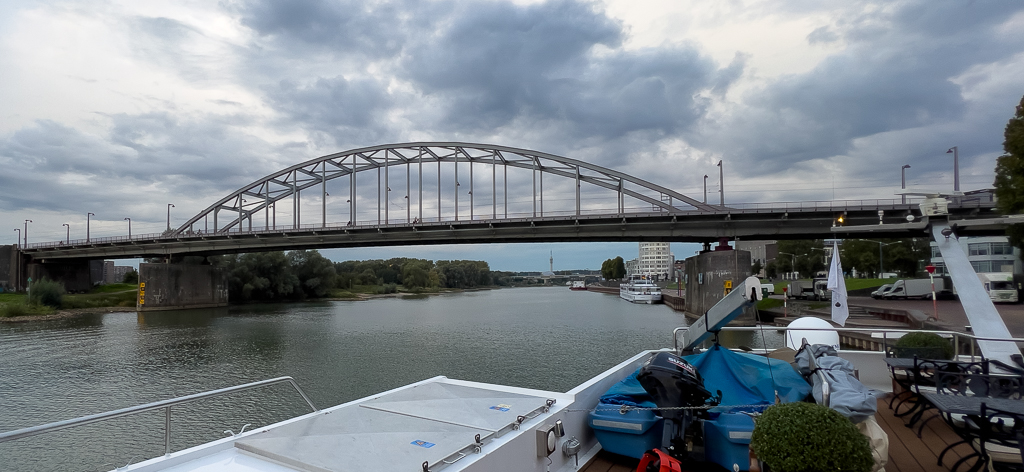
Arnhem was just a staging location for us today, though; our real goal was Paleis Het Loo, the former home of the Dutch Royal Family. The Palace was built for Statholder-King Willem III and Queen Mary in the late 17th Century; they were also King and Queen of England, Scotland, and Wales. In 1960, Queen Wilhelmina declared it would be donated to the nation when she died (which happened in 1962); the palace has been open as a state museum since 1984.
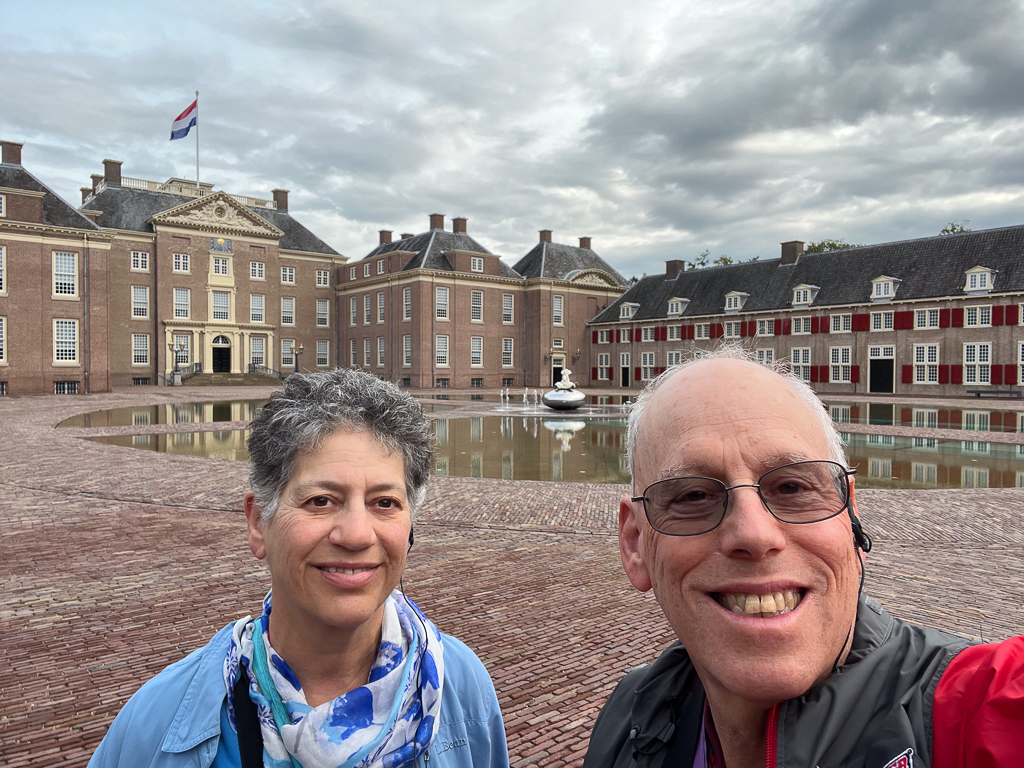
Our visit started with a walk through the gardens behind the building. They were designed by Daniel Marot, who emigrated from France for religious reasons. Symmetry is the overriding principle in the design.
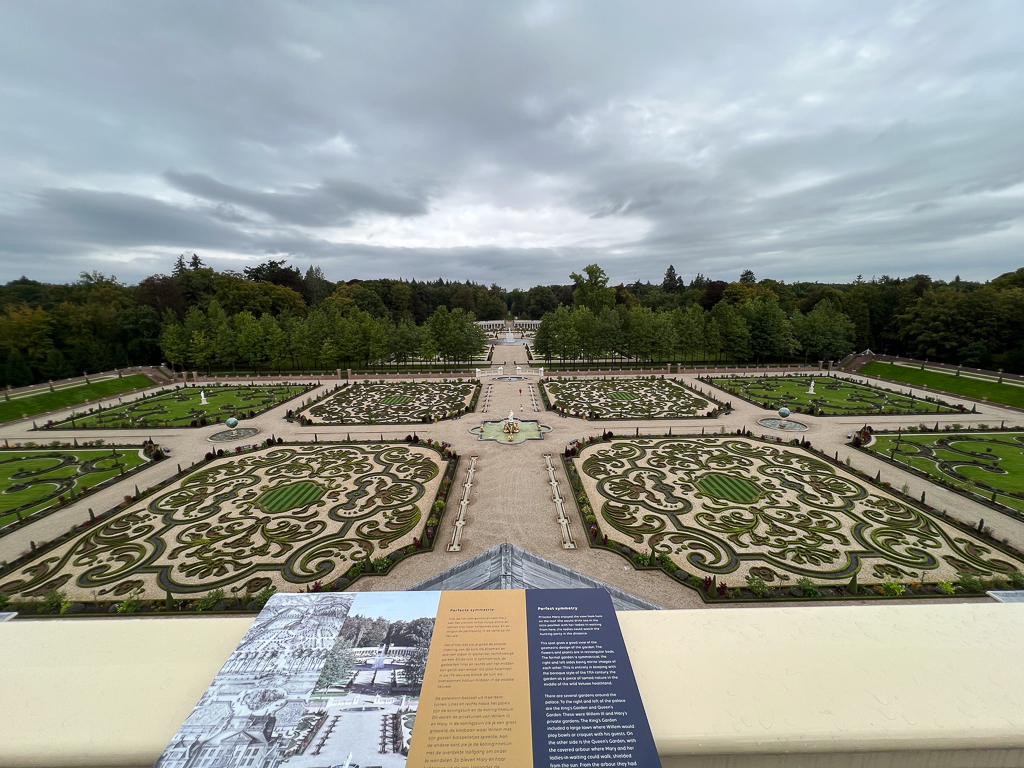
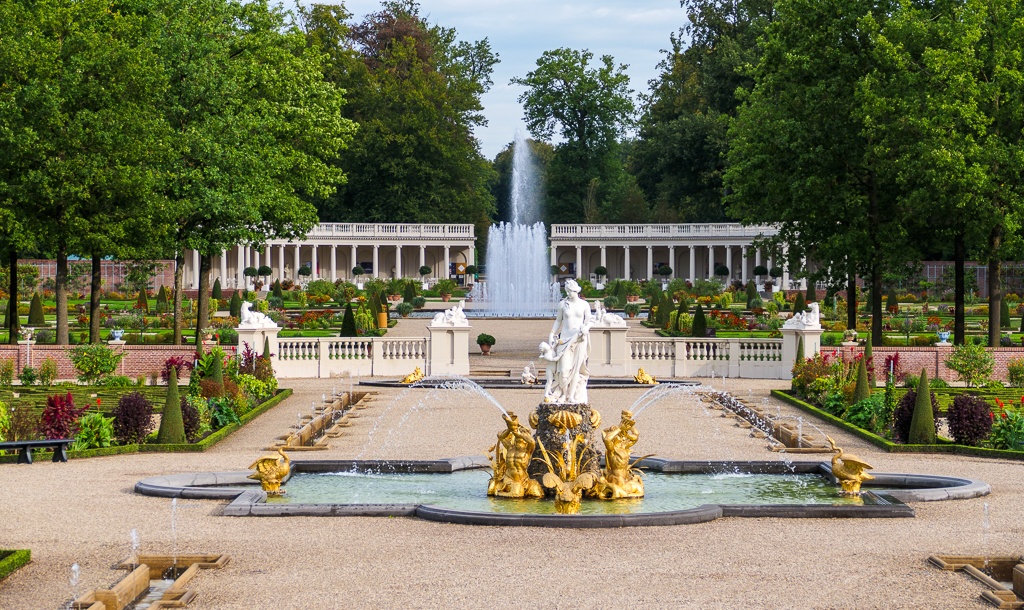
There are many fountains in the gardens, each with a symbolic meaning. The Venus Fountain, for example, is a reference to Mary’s having crossed the ocean to marry Wilhelm.
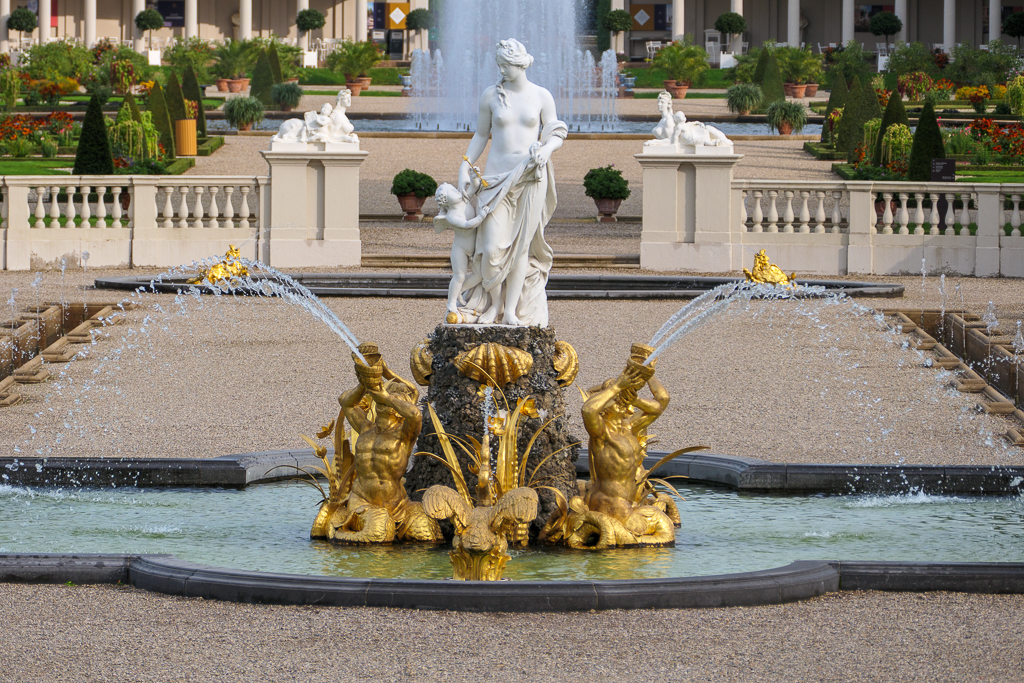
We entered the Palace and took a look at Mary’s kitchen (she liked to make marmalade!) and her shell cave.
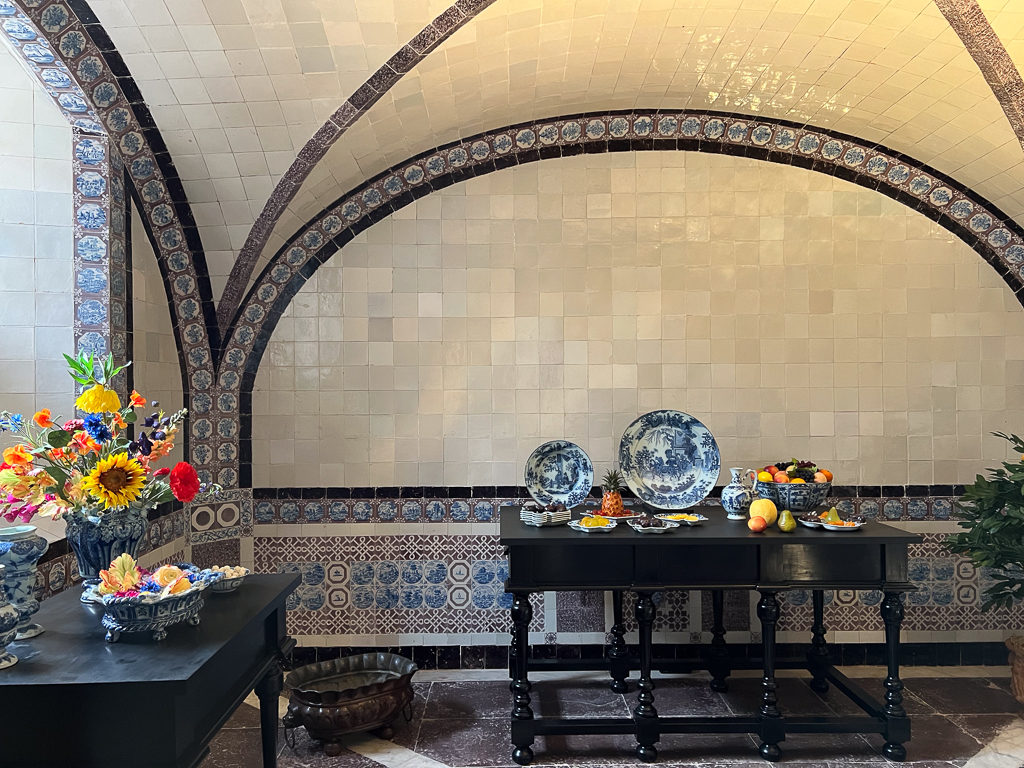
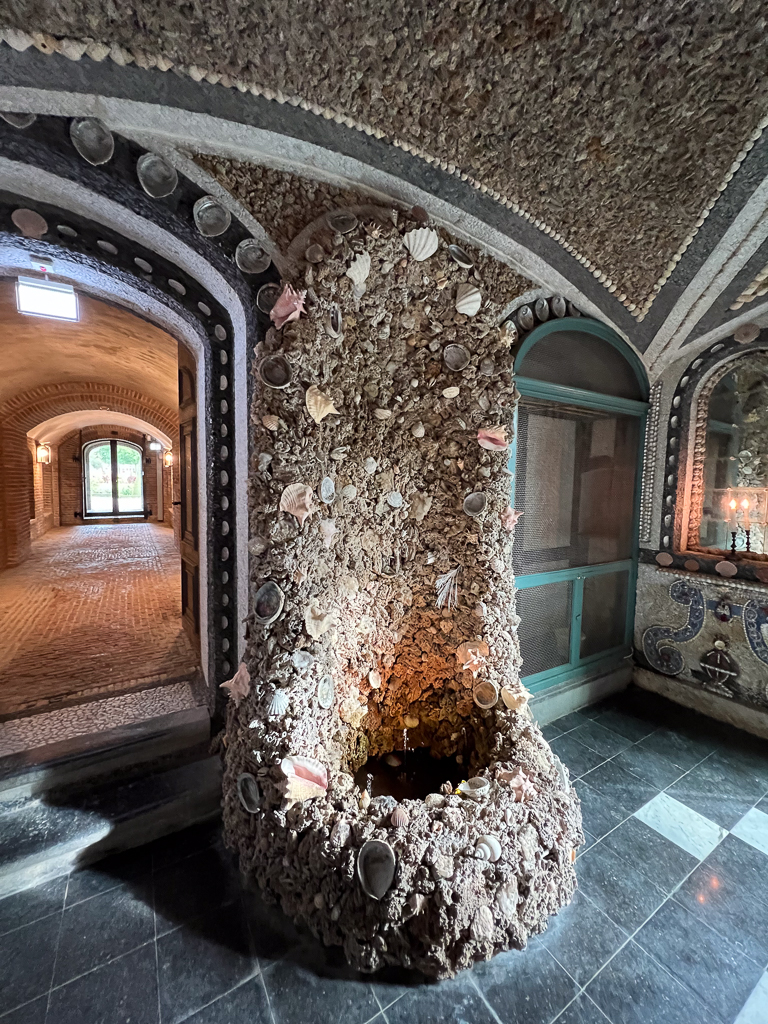
I really liked the ceiling of the shell cave, especially the way the decoration in the center had been subtly brought into the 21st Century.
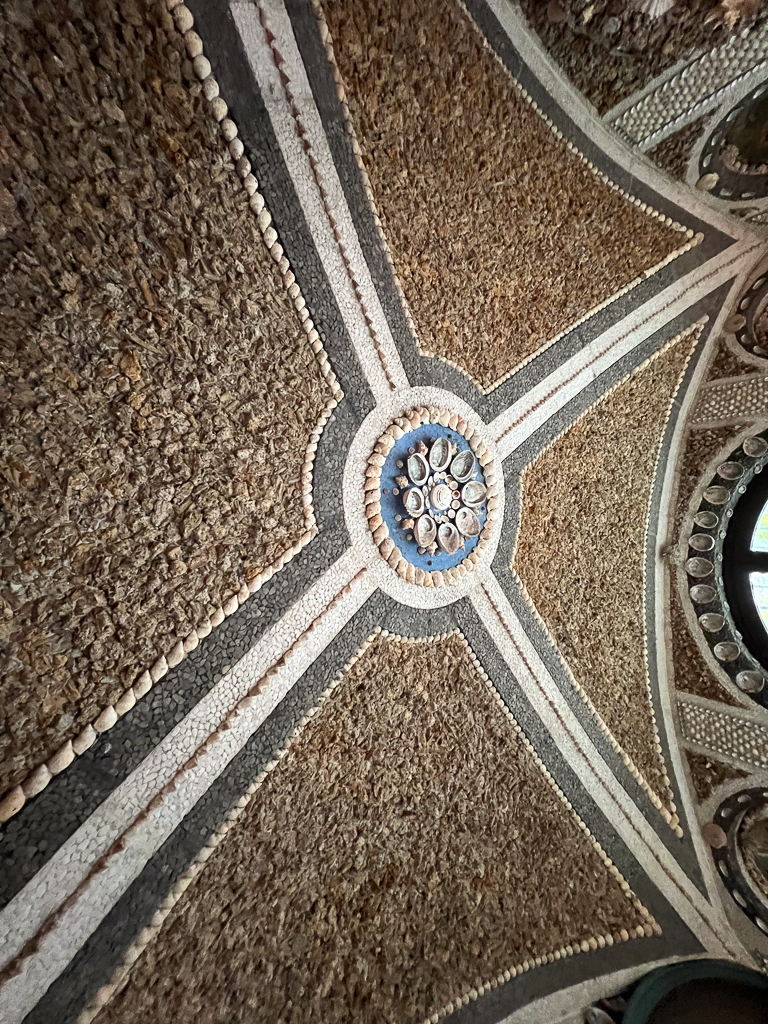
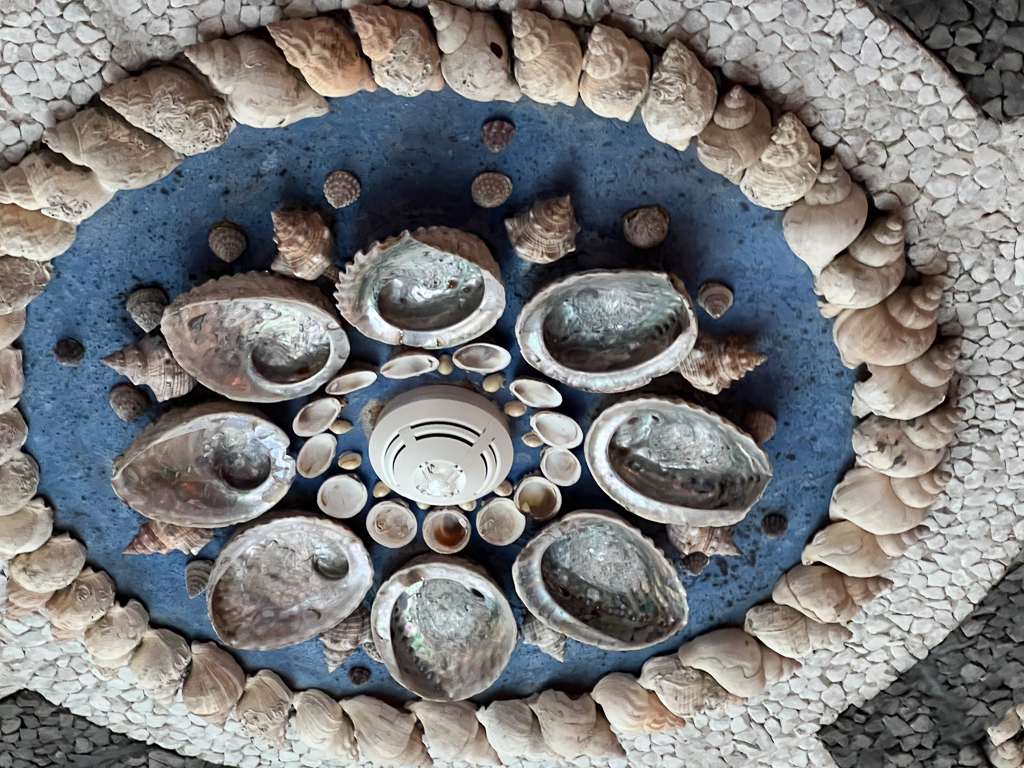
The Palace itself was divided into two wings – Willem’s wing and Mary’s wing. Today, the tour of Willem’s wing shows you how the rooms and the furnishings in that wing reflect the politics of the day.
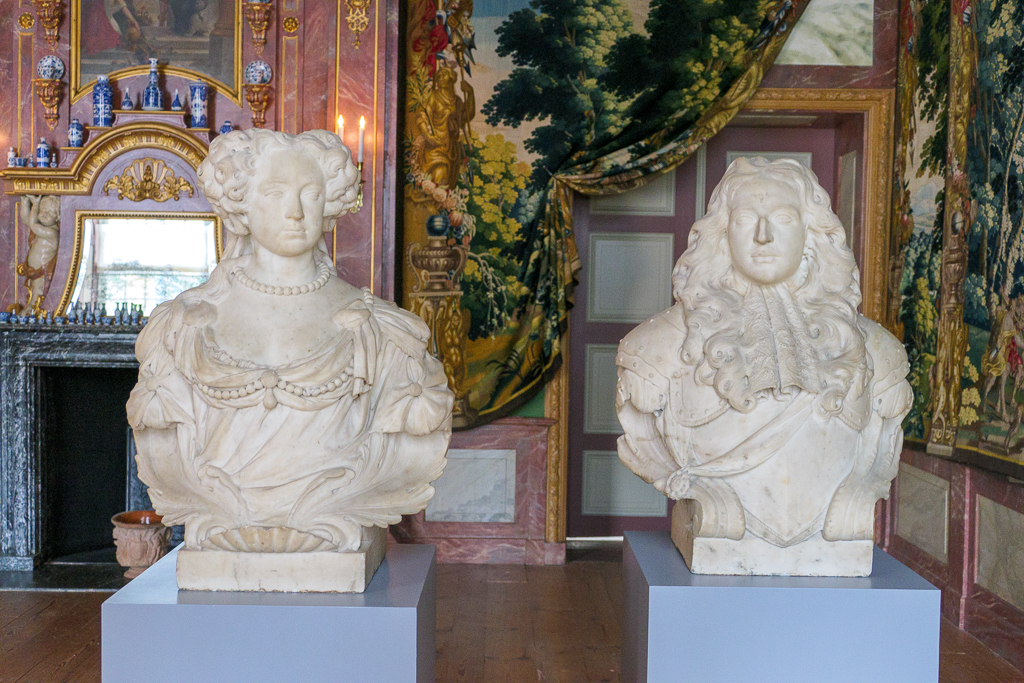
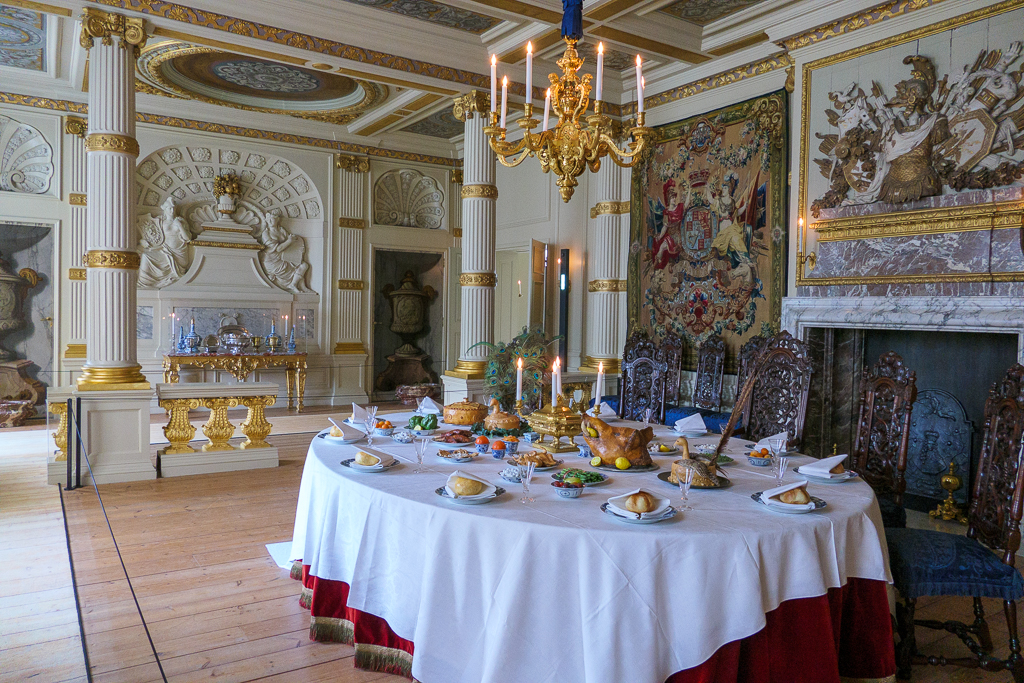
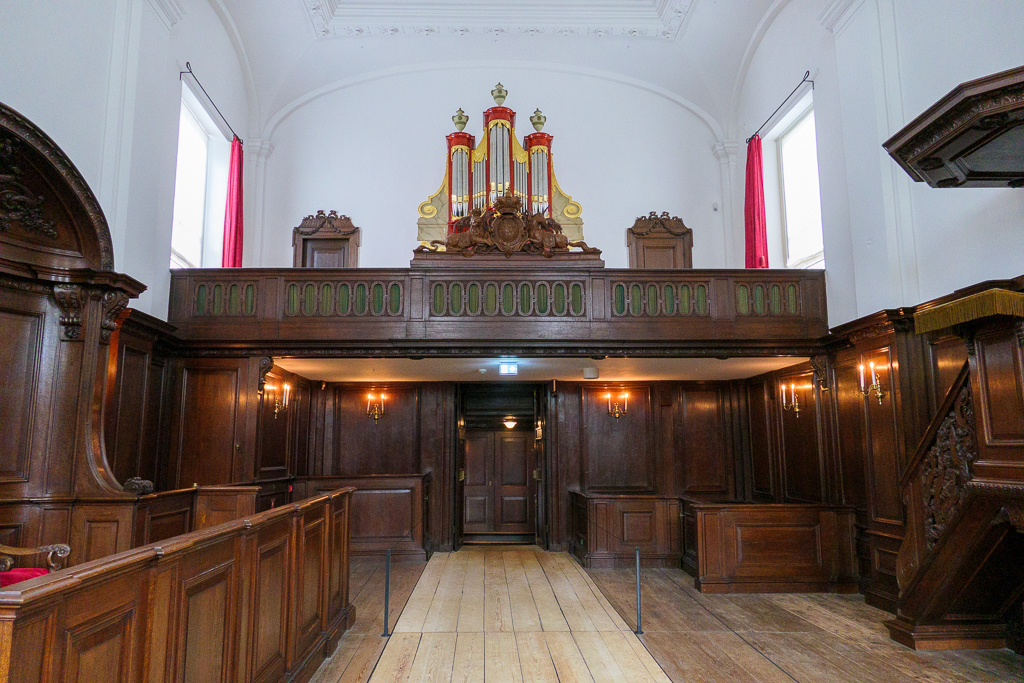
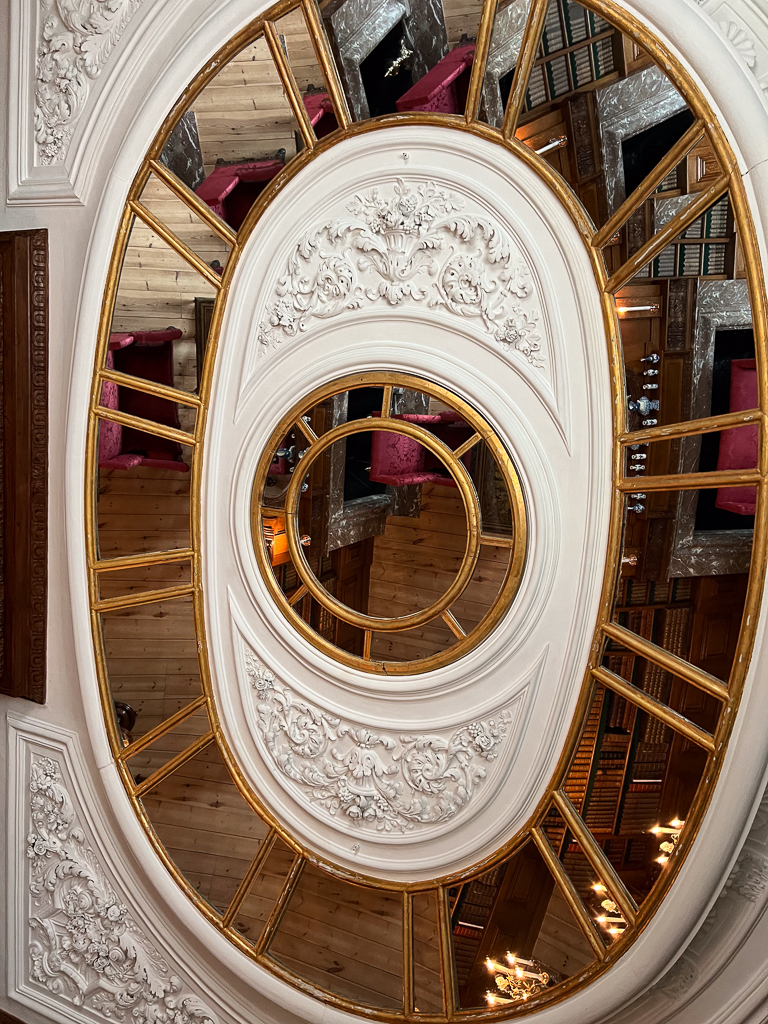
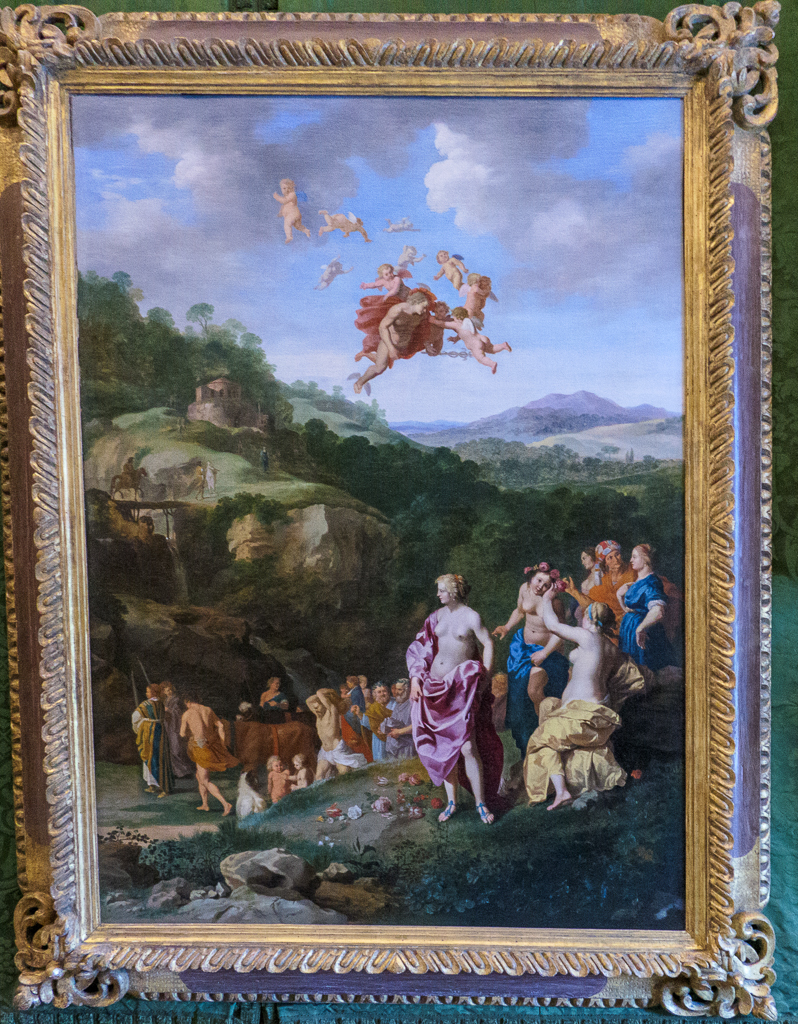
The tour also took us through the Great Hall, Mary’s bedchamber, Willem’s bedchamber, and his private closet, but I didn’t take any photos in those rooms.
The tour of Mary’s wing focuses on Queen Wilhelmina and her parents and descendants. We started with Queen Wilhelmina’s study.
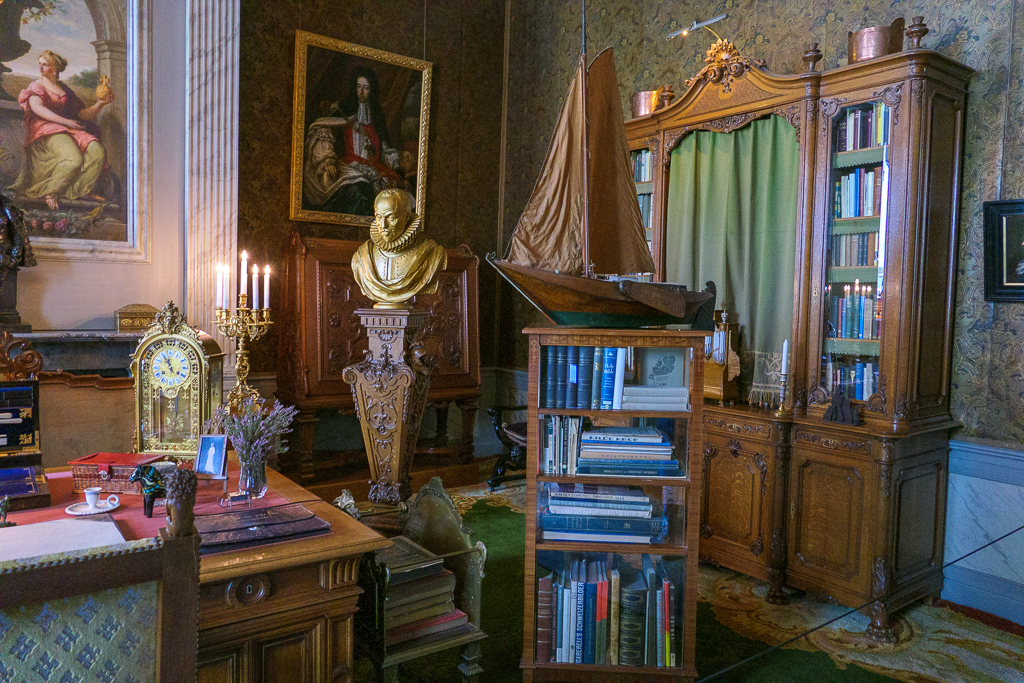
Then we moved on to her daughter’s salon and bedroom, which Juliana furnished herself when she was 18, mostly from a catalog (palace furniture was usually custom-made).
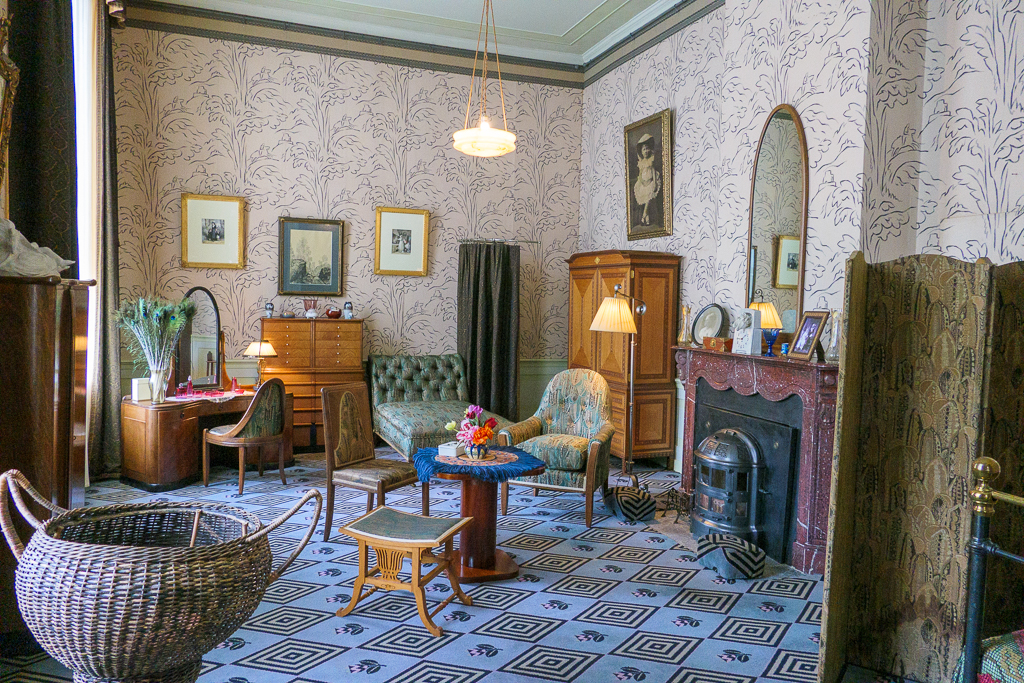
Prince Hendrik became the Netherlands’ first Prince-Consort when he married Queen Wilhelmina. His drawing room includes some of his kills from a trip to India before he was married.
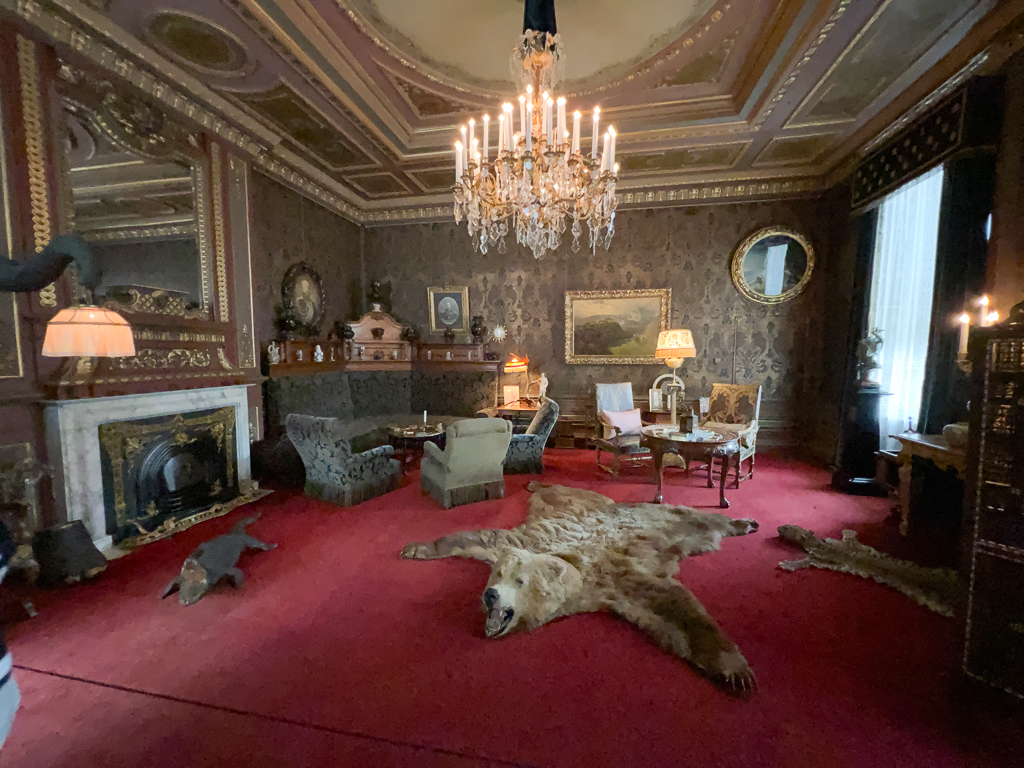
Eventually, Queen Wilhelmina gave Hendrik a “real job” – overseeing game and forest management at Het Loo. He still hunted, of course.
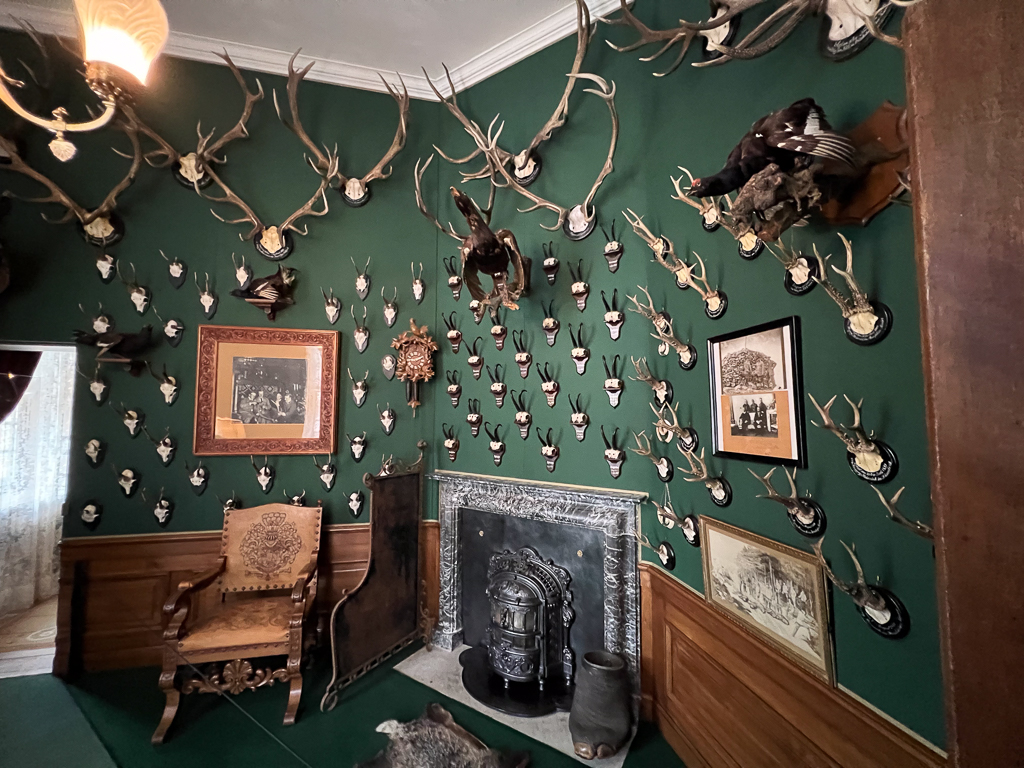
Wilhelmina’s father, Willem III, used this bedroom; in fact, he died here and then it became Wilhelmina’s official bedroom (though she was only 10 at the time).
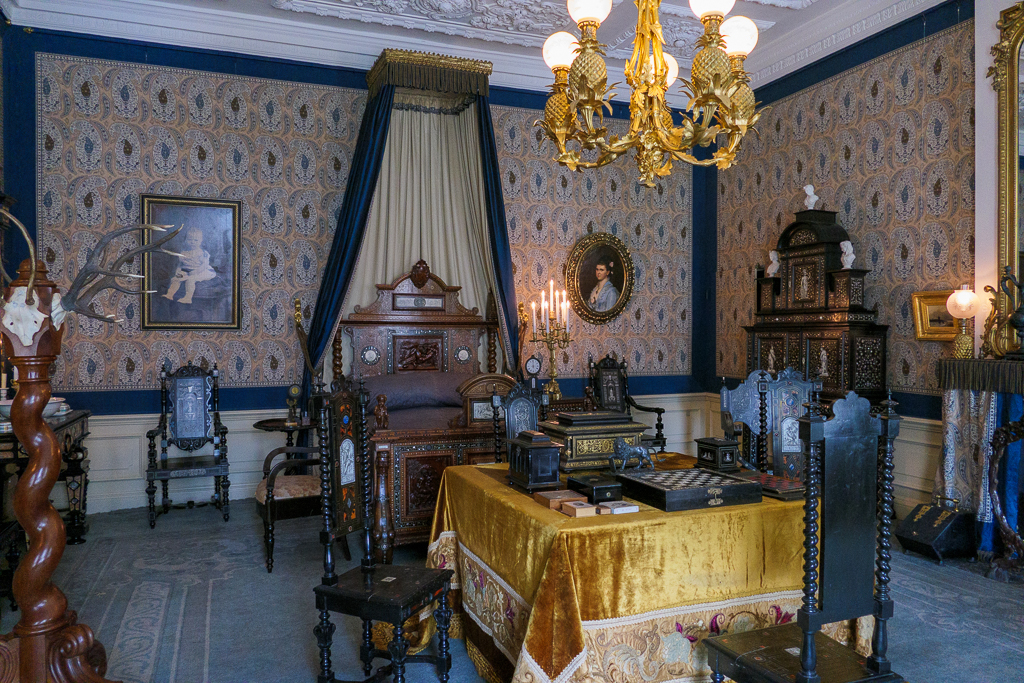
Willem I (Wilhelmina’s great-grandfather) used this office; it had originally been decorated in Empire Style by Louis Bonaparte, who had been appointed King of Holland by his brother, Napoleon.
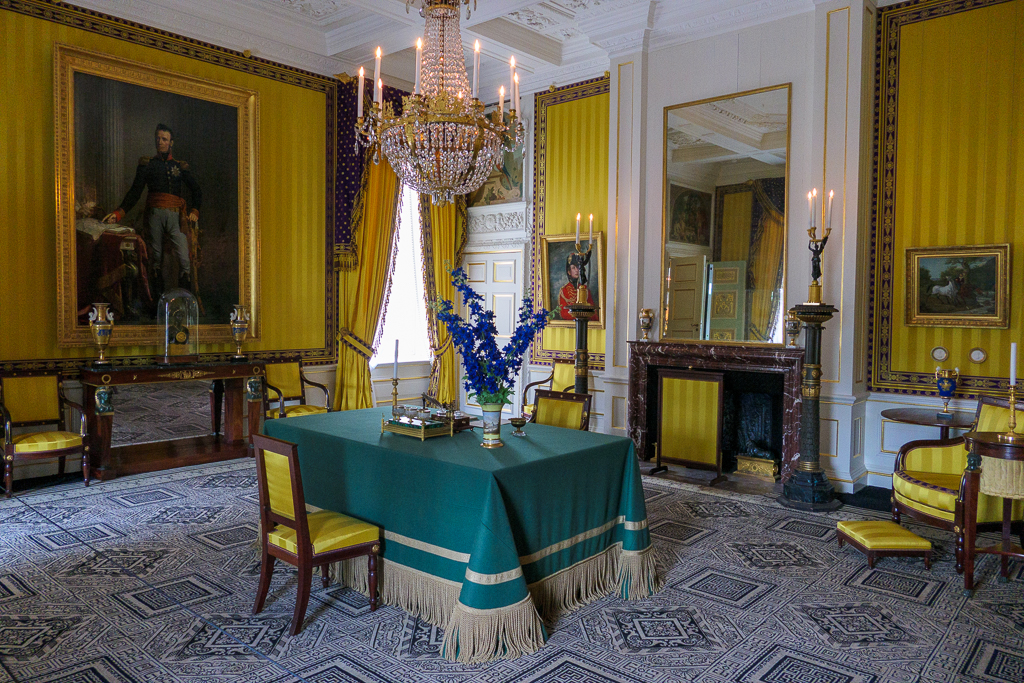
Our final stop brought us back to Queen Wilhelmina and her drawing room, which was her private space when she was Queen.
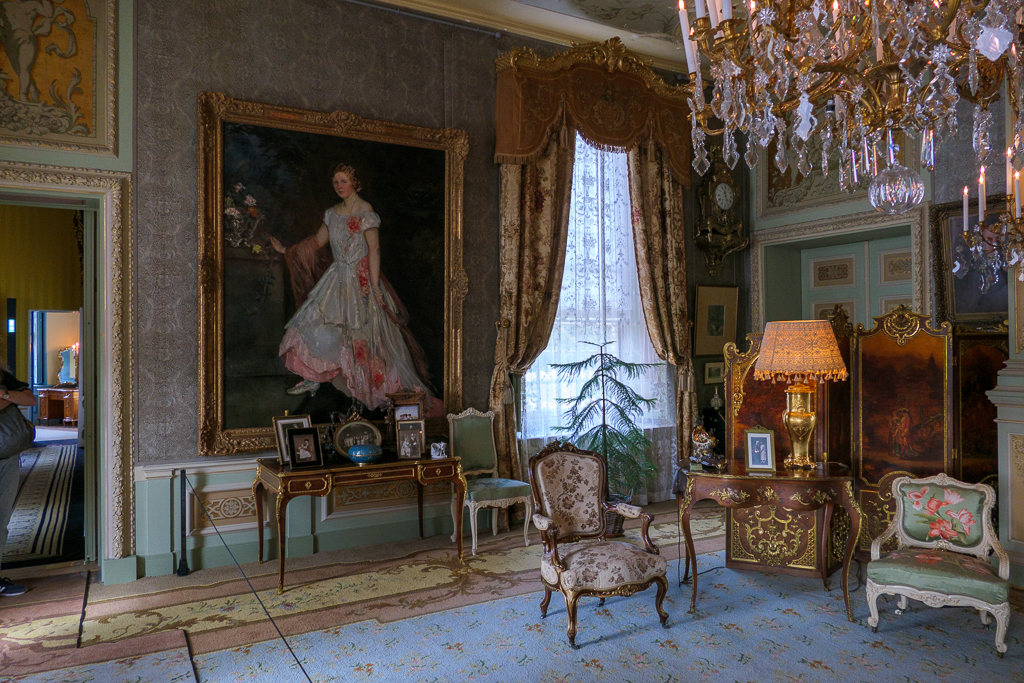
We sailed away from Arnhem soon after we returned from the tour, so I didn’t get to visit the bridge. The afternoon sailing took us through pleasant country, though I was taken aback by these Imperial Walkers attacking some poor innocent sheep!
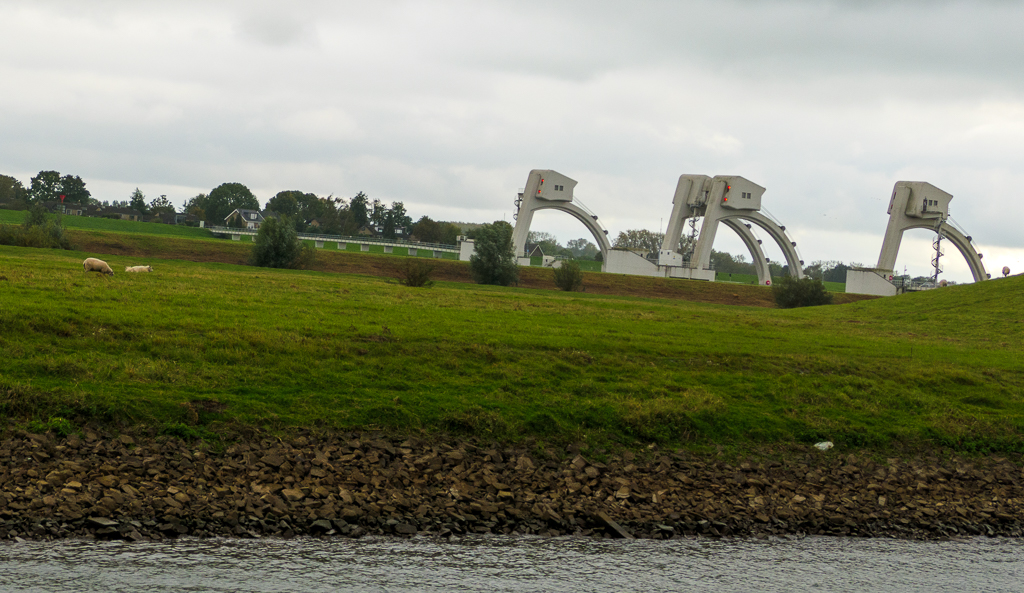
This windmill seemed more appropriate, though.
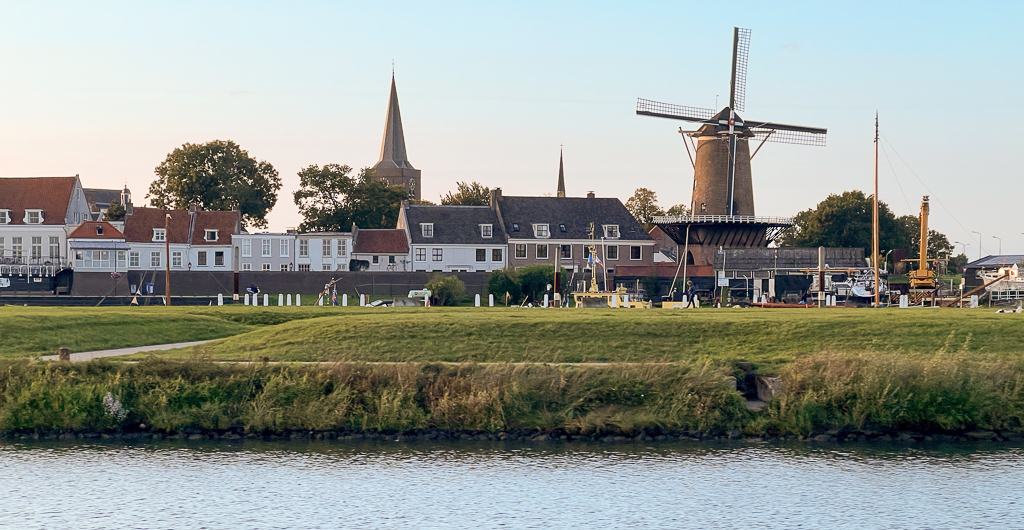
The ship set up challah, wine, and Shabbat candles (well, electric ones) and invited anyone who was interested to join in Kiddish; we had about 30 people in the room, not all Jewish. It was a very nice gesture.